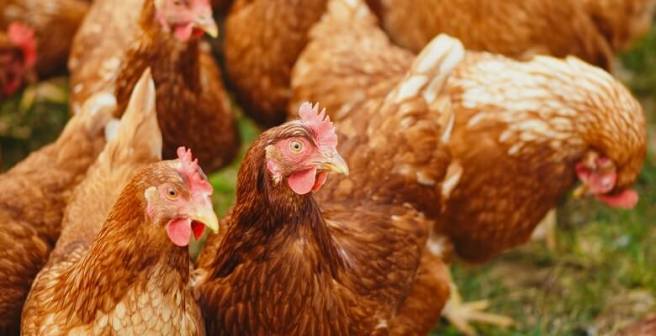Bird influenza outbreaks remain a critical concern

The COVID-19 pandemic and the ongoing public responses to its threats highlight one of the major oversights of governments around the world—they have long been ill-prepared for the grim reality that pandemics will continue to appear and claim millions of lives, just as they have done for centuries. How we should identify and draw up countermeasures for future pandemics is a hot question of public policy.
While outbreaks of monkeypox have been grabbing headlines and raising important questions about the potential risks1, influenza remains an ever-present threat. Recent outbreaks of avian influenza threaten bird species, and bird populations remain possible reservoirs of potentially zoonotic strains. Worryingly, new outbreaks of these strains are being reported over the world in recent years.2
H5N1—A familiar foe
Since the early 2000s, outbreaks of H5N1 avian influenza have presented the most critical threats to poultry farming and wild fowl. In typical outbreaks, thousands of birds are culled to contain the spread of the virus, inflicting considerable economic hardship on farmers. More concerning still is the threat of zoonosis. Globally, 863 humans have been infected to date, with 455 fatal cases.3 This 53% fatality rate raises alarm bells. While human-to-human transmission has yet to be reported, the mere possibility of such transmission is extremely worrying.
In 1996, a particular deadly strain known as HPAI H5N1 was identified in China. In 2021 and 2022, the United States has suffered numerous outbreaks of this strain, with millions of birds at hundreds of farms being culled.4,5 The first case of human H5N1 transmission in the United States of America was reported on May 6, 2022, by the WHO,6 highlighting the possibility that more human infections may occur if the virus is not brought under control.
Wildfowl have also suffered immensely,7 with rare raptors and waterfowl at risk of infection and death. Controlling this virus will be important not only for human activities, but also for supporting delicate ecosystems.
H3N8—New development
On May 9, 2022, the WHO put out a disease outbreak news item on a 4-year-old boy from Henan Province, China, who was diagnosed with a case of H3N8 avian influenza in late April 2022.8 This case is noteworthy for being the first recorded case of H3N8 infection in humans. This strain is commonly found in wildfowl, usually resulting in mild symptoms in both wild birds and domestic poultry.
The patient presented in a critical condition, suggesting that this strain could pose similar dangers as other avian viruses in humans. Thankfully, no close contacts of the patient were infected, highlighting that this virus may have low human-to-human transmission potential.
The next pandemic?
As ever, virologists are continuously assessing the potential for future outbreaks of influenza, both seasonal and pandemic. Some avian strains, such as H9N2, have been suggested as having pandemic potential;9 however, researchers believe that existing strains remain poorly adapted for mammalian transmission.10 Accurately assessing the threats posed by avian strains will remain a major challenge, but modern reporting systems and data analysis may be a huge boon for identifying these threats quickly, particularly in wild populations that have been neglected in past monitoring strategies.11
References
1. Kozlov, M. Monkeypox outbreaks: 4 key questions researchers have. Nature (2022) doi:10.1038/d41586-022-01493-6.
2. Poovorawan, Y., Pyungporn, S., Prachayangprecha, S. & Makkoch, J. Global alert to avian influenza virus infection: From H5N1 to H7N9. Pathog. Glob. Health 107, 217–223 (2013).
3. World Health Organization. Regional Office for the Western Pacific. Avian Influenza Weekly Update 2022. https://apps.who.int/iris/handle/10665/351652 (2022).
4. CDC. Reporting for Bird Detections across the United States. Centers for Disease Control and Prevention https://go.usa.gov/xuWeT (2022).
5. Caliendo, V. et al. Transatlantic spread of highly pathogenic avian influenza H5N1 by wild birds from Europe to North America in 2021. 2022.01.13.476155 (2022) doi:10.1101/2022.01.13.476155.
6. Avian Influenza A (H5N1) – the United States of America. https://www.who.int/emergencies/disease-outbreak-news/item/2022-E000111.
7. Greenfieldboyce, N. A worrisome new bird flu is spreading in American birds and may be here to stay. NPR (2022).
8. Avian Influenza A(H3N8) - China. https://www.who.int/emergencies/disease-outbreak-news/item/2022-DON378.
9. Alexander, P. E., De, P. & Rave, S. Is H9N2 Avian Influenza Virus a Pandemic Potential? Can. J. Infect. Dis. Med. Microbiol. 20, e35–e36 (2009).
10. Herfst, S. et al. Human Clade 2.3.4.4 A/H5N6 Influenza Virus Lacks Mammalian Adaptation Markers and Does Not Transmit via the Airborne Route between Ferrets. mSphere 3, e00405-17 (2018).
11. Ramey, A. M. et al. Highly pathogenic avian influenza is an emerging disease threat to wild birds in North America. J. Wildl. Manag. 86, e22171 (2022).
Comments
You're looking to give wings to your academic career and publication journey. We like that!
Why don't we give you complete access! Create a free account and get unlimited access to all resources & a vibrant researcher community.











